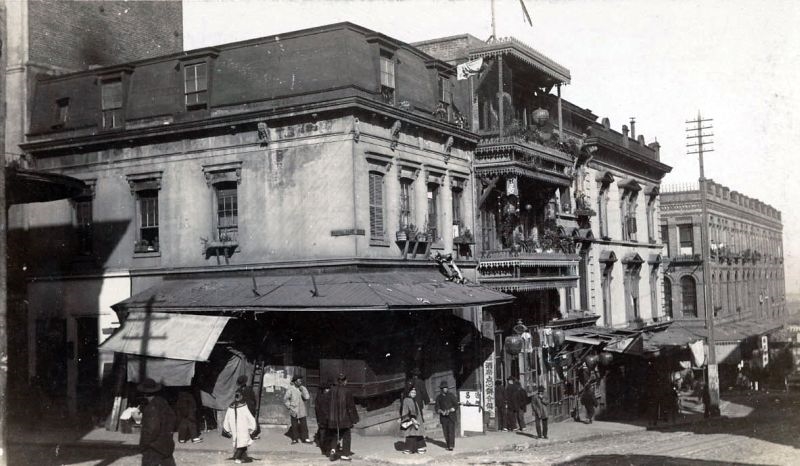In the history of San Francisco, there are two infamous Madams... Belle Cora, and Ah Toy. The former is arguably much more infamous.
There are several versions of Bell's origins, but most historians believe she is the daughter of strict Irish parents who happen to live one house over from a brothel, and Belle and her sister became intrigued with the oldest profession. Later, Belle went off on her own, and after a while, made it to New Orleans, where she met Charles Cora, a riverboat captain who's also an avid gambler. The two became inseparable and decided to make their way West. They tried several cities in California until settling in San Francisco by 1849, just as gold was discovered in Sonoma. They established a parlor / brothel at the corner of Dupont and Washington... with the most beautiful women... and the highest prices, catering to the elite of the city. Belle was the most expensively dressed woman in town, and Charles himself was no slough, believed to have a net worth of 400K, which is practically billionaire status in today's money.
However, the city itself is changing from the frontier port it was in 1849-1850 into a bustling proper city by 1852, with a population in the 20K to 30K range, and the city kept on growing. As more people arrived, more "civilized" people arrived as well, and they wanted the vices expelled, or at least, minimized. And both Charles the gambler and Belle the madam are public symbols of the vices they wanted to remove from the city.
The fateful day was November 15th, 1855. The story was that Belle was in some sort of a tiff with Mrs. William Richardson, wife of a US Marshall. That day, both Belle and Charles attended a play sitting in the first balcony, the most expensive seats in the theater. Mrs. Richardson tried to be a Karen, something akin to "oh, this theater lacks class, allowing such riffraff to sit in VIP seats. Where's the manager! I want to see the manager!" When the management refused to eject the Coras, both Richardsons stalked out of the theater.
The next day, Charles Cora and Marshall William Richardson encountered each other multiple times all over the city, in front of many witnesses, sometimes hostile with heated words, sometimes friendly and sharing drinks. Then under very murky circumstances, while walking on Clay St and Leidesdorff, Charles Cora fired one shot at William Richardson, killing him instantly.
Belle did EVERYTHING to save Charles. The prosecution outright accused her of trying to buy off and/or intimidate the star witness. Belle hired the best attorneys available in San Francisco, and personally delivered meals to the city jail. The trial actually resulted in a hung jury, and newspapers shouted about alleged bribes paid out by Belle and her collaborators.
With a bit more time, there was a chance that Charles could have been retried and possibly freed, but that chance evaporated when another shooting occurred in 1856... On May 14th, 1856, City Supervisor James Casey shot newspaper editor (and notorious muckraker, probably a historical Alex Jones) James King of William. This touched off a wave of vigilantism, resulting in a new "Vigilance Committee" being formed. On May 18th, 2000+ citizens, fully armed (and they even commandeered a cannon), formed a mob and went to the prison where Casey and Cora were held, and demanded the two be handed over. And the sheriff, after being threatened with the cannon, gave up and surrendered both.
Both were retried, this time without their defense attorneys (one of the vigilants acted as their defense). Casey was convicted unanimously, but Cora actually came close to a tie, but in the end was convicted of murder and sentenced to hang on the 22th.
Belle somehow heard of the news and convinced the vigilantes to let her spend his final hours with him, and 2 hours before his execution, they were officially married. And at 1:21pm, Casey and Cora were hung at what's today, roughly Battery and Sacramento.
Belle Cora retreated to Cora House, their parlor, and was not seen for a month. After that, she sold the place, and gave away most of her fortune to philanthropic causes, esp. children's education. She died in 1862 of pneumonia, at the age of 30.
Cora House itself is gone, burned in the 1906 earthquake. It was at now Grant and Washington.
 |
| Cora House, circa 1853 |
Comments
Post a Comment